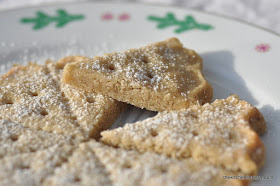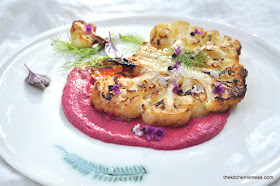Saint Andrew has been celebrated in Scotland for over a thousand years, with feasts being held in his honor as far back as the year 1000 AD. However, it wasn’t until 1320, when Scotland’s independence was declared with the signing of The Declaration of Arbroath, that he officially became Scotland’s patron saint. The flag of Scotland, the St Andrew’s Cross, was chosen in honor of him (the white cross represents St Andrew's cross and the blue represents the sky).
It is believed that Andrew the Apostle, also known as Saint Andrew, was born between the years 5 AD and 10 AD in the village of Bethsaida on the Sea of Galilee, now part of Israel. According to Christianity, Saint Andrew was one of Jesus Christ’s twelve disciples. He and his brother, Simon Peter, were fishermen when they met Jesus Christ and became his first disciples.
Like Jesus, Saint Andrew was martyred for his beliefs by crucifixion. Andrew died in Patras in Achaea (Greece) on November30th, 60 AD. Early texts describe Andrew as bound, not nailed, to a Latin cross of the kind on which Jesus is said to have been crucified but a tradition developed that Andrew had been crucified on a cross of the form called crux decussata (X-shaped cross, or 'saltire'), now commonly known as a 'Saint Andrew's Cross' (Andreaskreuz) - supposedly at his own request, as Andrew is said to have refused a T-shape cross, deeming himself 'unworthy' to be crucified in the same manner as Jesus Christ.
Sometime after his death, a few of his relics arrived in Scotland, including a kneecap, arm and finger bone. There are many versions of this tale, but in one religious fable, in 345 Saint Rule (aka Saint Regulus, a Greek bishop) was instructed by an angel to take some of Saint Andrew’s relics and go west by ship, wherever he would be shipwrecked, Saint Rule was to establish a church. Indeed, Rule and his followers eventually found themselves off what is now Scotland, where they were shipwrecked in 347. The site of the shipwreck is said to have been near what is now the harbour of St Andrews, a place that at the time was under Pictish control and known as Kilrimont. According to legend, Rule established a church in what is now St Andrews dedicated to St Andrew and housing his relics.
St. Andrews Cathedral was built to house the reliquary in 1318, but both the cathedral and the relics were destroyed in the Scottish Reformation. In order to make up for this loss, the Archbishop of Amalfi generously gifted a piece of Saint Andrew’s shoulder blade, so that a piece of the saint would remain forever in Scotland.
Why is he patron saint of Scotland – well, it seems that there is no one clear tale that answers this question, however, one story says that at the end of the 8th century, Achaius, King of Scots (796-828) was preparing for battle against King Aethelstan of East Anglia. Saint Andrew appeared to King Achaius in a dream promising him victory, then on the day of the battle an X appeared in the sky, the symbol of Saint Andrew. Achaius vowed if he won he would make Saint Andrew the country's patron saint. Achaius won the battle and today, the Scottish flag has the X-shaped cross on it, as it is Saint Andrew's symbol.
In Scotland, and many countries with Scottish connections, Saint Andrew's Day is marked with a celebration of Scottish culture with traditional Scottish food and music. In Scotland the day is also seen as the start of a season of Scottish winter festivals – in Germany but also parts of Ukraine, Austria, Slovakia, Poland, Russia and Romania, a superstitious belief exists that the night before Saint Andrew's Day (Andreasnacht) is especially suitable for magic that reveals a young woman's future husband or that binds a future husband to her.
It is interesting to note that Saint Andrew is the patron saint not only of Scotland but other countries and cities around the world as well, including Cyprus, Greece, Romania, Russia and Ukraine. And the flag of Scotland (and consequently the Union Flag and those of some of the former colonies of the British Empire) is, by far, not the only flag featuring the Saint Andrew's saltire cross (including New Spain and Burgundy).
But Saint Andrew's Day also marks the beginning of the Advent season – that, of course, marks the beginning of festive baking season. Finally. The actual origin of the rather curious name 'Petticoat Tails' is somewhat elusive but there are a few suggestions. One is that the shortbread disc was said to resemble the stitches sections of cloth that formed the petticoats of ladies when them were laid out on the floor. Other ideas are less romantic, noting that the name could derive from petits cotés, a type of pointed biscuit, meant for dunking into sweet dessert wine, or the old French term for little biscuits, petites gastelles. Whatever the real source of the name, they are a perennial favorite and Mary, Queen of Scots was reputed to have been particularly fond of the Petticoat Tails, which in her days were commonly flavored with caraway seeds, which were all the rage in British baking for several centuries. In fact, the earliest published shortbread recipes from the 18th century were more elaborate than the standard shortbread today - they were baked with candied citrus peels and garnished with caraway comfits.
Scottish 'Petticoat Tails' Shortbread
Ingredients
- 300g plain (AP) flour (OR use white spelt flour), plus a little extra for rolling out the dough
- 50g rice flour (OR use fine corn flour but not corn starch or polenta)
- 225g salted butter, room temperature
- 100g superfine baking (caster) sugar
- 8g pure vanilla sugar
- icing sugar, for dusting
Preparation
- In a bowl, whisk together the flours, add the butter, sugar and vanilla sugar and, using the dough hook of your hand mixer, mix all the ingredients together until pale and creamy. OR tip all the ingredients onto your lightly floured work surface and bring the dough together as a disk, but whatever you do, don’t overwork it. Cover it with kitchen wrap and place in the fridge for a good 60 minutes.
- Take the dough out of the fridge (if it is too cold to handle properly, leave it out for a while), unwrap and roll to a 25cm circle, about 1cm thick. Trim around a large plate to get a neat edge.
- Transfer the dough to a large baking sheet. Use 2 fingers to crimp all the way around the edge of the dough then, using the tines of a fork, mark dotted lines to portion the shortbread into 8 wedges. Cover the shortbread and place the baking sheet in the fridge to chill again – this time for about 30 minutes.
- In the meantime, pre-heat your oven to 180° C.
- Bake the shortbread for 25 to 35 minutes or until golden and cooked through.
- Leave to cool completely on the tray (otherwise the shortbread will break).
- To decorate, place a lacy doily over the shortbread and dust with a generous layer of icing sugar. Pull the doily away to reveal the lacy pattern. NOTE: The Shortbread will keep for up to 5 days; of course, it is always best to use a large cookie tin for storage and to keep the tin in a coolish place.
Known for his generous and cooperative spirit, St. Andrew remains the patron saint of fishermen, fishmongers, singers and pregnant woman, and is said to offer protection against sore throats and gout.
If you are like me around this time of year, you will certainly know of a few friends and/or family members that appreciate your seasonal bakes - so, I always make sure to bake more than one round of shortbread, I start with the above classic vanilla version, then I make anouther batch, add festive spices (about 2 generous teaspoons of a seasonal spice blend such as 'Speculaas Spice Mix') often dividing the dough in two or three, to make a few smaller rounds with the same pretty design - these make formidable gifts for cookie lovers, trust me. You can easily order a spice mix online, buy it at your local store or mix it yourself using the freshest of spices, for the my recipe for a very seasonal Speculaas Spice Mix, you can go HERE. Btw while the Dutch refer to the classic cookies as Speculaas, the Belgians call them Speculoos, the recipe for the spice blend, however, remains the same.
Happy St Andrew's Day to all those celebrating it today – since St. Andrew is my patron saint, you will find me in the kitchen today, happily baking away a few rounds of Scottish Shortbread.
I took the below picture of Saint Andrew at the St Andrew's church in Cologne, Germany. For more info about this beautiful dominican church, that is just a stone's throw away from the Cologne Cathedral, pls go HERE.
Please note that this blog post is part of my series for a 'local' radio station, where, throughout the year, I present different baked goods that are closely tied to various holidays and seasons. If you are interested, have a LOOK & LISTEN (in German) HERE.
- in January, for Three Kings Day (Dreikönigstag) two kinds of Galette des Rois (Dreikönigskuchen) (HERE)
- for Lent (Fastenzeit) Lenten Soup with Lenten Beugel (Fastenbeugel) (HERE)
- for Good Friday (Karfreitag) the delicious Hot Cross Buns (HERE)
- for Pentecost /Whitsun (Pfingsten) the fun Allgäu Bread Birds (Allgäuer Brotvögel) (HERE)
- for the beginning of the summer vacation, the lovely Sacristains (Almond & Sugar Puff Pastry Sticks) (HERE)
- for St Christopher's Day (St Christophorus), the energy-packed Müsli Power Bars (Müsli Energieriegel) (HERE)
- for Mary's Assumption Day (Mariä Himmelfahrt) my Tear & Share Herb Bread (Kräuterbrot) (HERE)
- for Mary’s Birthday (Mariä Geburt) some very pretty Mary’s Sweet Rolls (Süße Marienküchlein) (HERE)
- for Thanksgiving (Erntedankfest) a delicious and seasonal Thanksgiving Apple Tart with Frangipane (Erntedank Apfeltarte mit Mandelcreme) (HERE)
- for Halloween a Pumpkin Spice Bundt Cake (Kürbis-Gewürzkuchen)
- for St Martin's Day (Martinsfest) the cheerful Sweet Dough Men (Weckmänner) (HERE)
- for St Andrew's Day (Andreastag) a classic Petticoat Tails Shortbread (HERE)
- for Christmas Day (Weihnachten) these Traditional German Gingerbread (Elisenlebkuchen) (HERE)
- for New Year's Eve a New Year's Eve Pretzel (Neujahrsbretzel)
- for Candelmas Day (Mariä Lichtmess) some delightful Navettes de Saint Victor (HERE)
- for Carnival Season (Karneval) these lovely Carnival Doughnuts (Karnevals-Krapfen) (HERE)
- for St Patrick's Day a traditional Irish Brown Soda Bread (Irisches Sodabrot)(HERE)
- for St Joseph's Day a long-forgotten but thankfully re-discovered Sweet Cotton Bread (Baumwollbrot)(HERE)
- for Palm Sunday (Palmsonntag) these very pretty Palm Pretzels (Palmbrezel) (HERE)
- for Easter Sunday (Ostersonntag) an Easter Brunch at Home with Tarte Flambée (Flammkuchen) (HERE)
- for the Month of May (Marienmonat Mai) these elegant Visitandines de Nancy (HERE)
- for Pentecost/Whitsun these festive Beignets (Heiliggeistkrapfen) (HERE) - more delicious treats to come very soon.
Btw, most crossings in Europe and around the world are marked by some form of a Saint Andrew's Cross (Andreaskreuz) to warn road users about a level crossing and/or about a level crossing with no barriers. I took the below pic tonight at the corner of Kaiser- and Königstrasse (Emperor's -and King's Road) in Bonn, Germany.






































